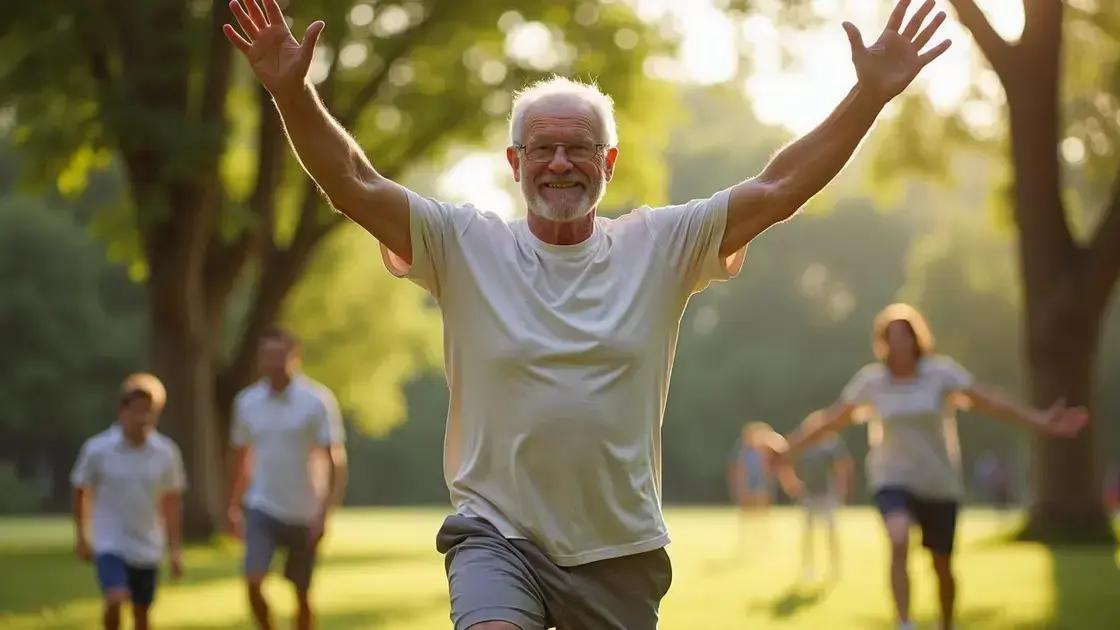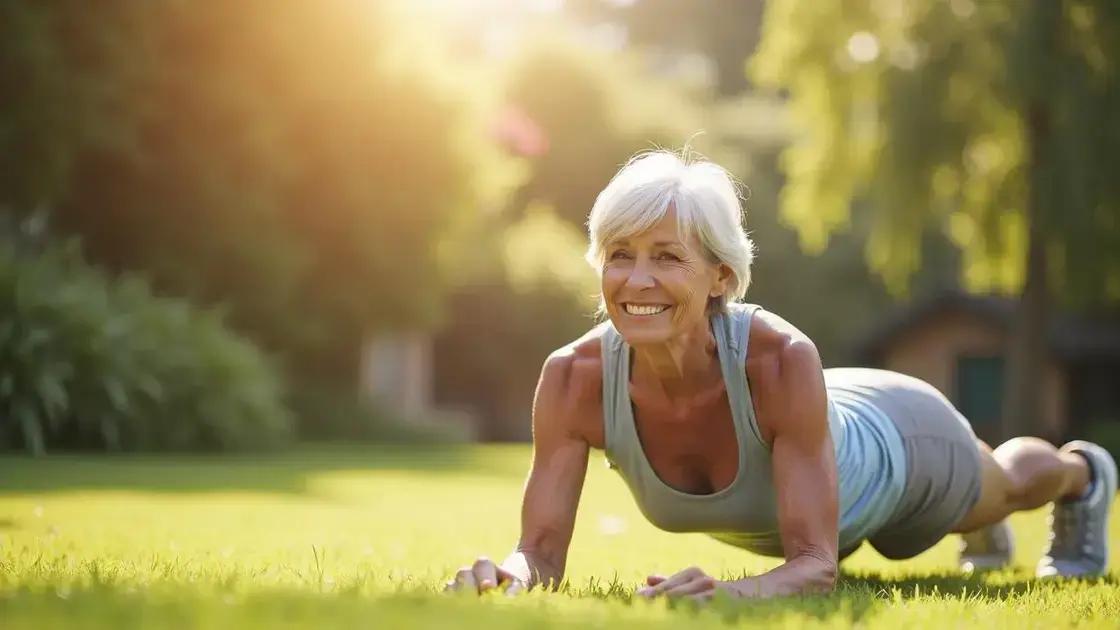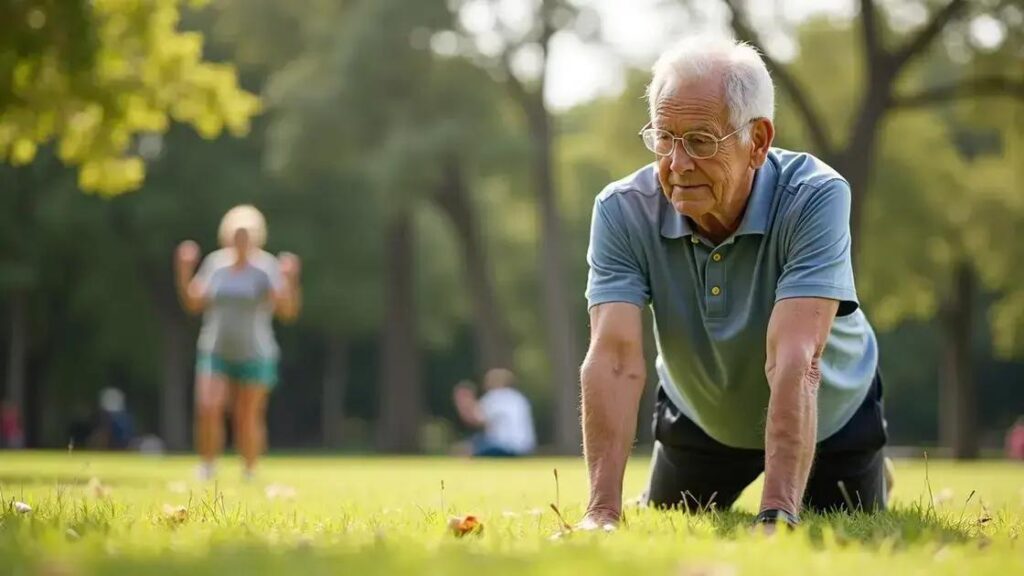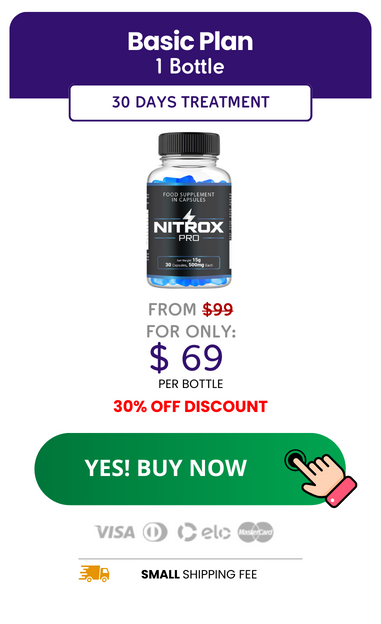Starting calisthenics after 50 is a fantastic way to enhance strength, flexibility, and overall health. By incorporating essential warm-up exercises, basic calisthenics moves, and a structured weekly routine, older adults can enjoy a safe and effective workout experience that promotes physical and mental well-being.
Starting calisthenics after 50 can be an exciting journey towards improved health and fitness. As we age, maintaining physical activity is vital for enhancing strength, flexibility, and overall well-being. In this article, we will explore the numerous benefits of calisthenics for older adults and provide practical tips for incorporating it into your life. Whether you’re looking to regain mobility or simply wish to stay active, our guide offers essential warm-up exercises, fundamental movements, and a weekly routine tailored for beginners.
Benefits of Calisthenics for Older Adults

Calisthenics offers a variety of benefits for older adults, making it an excellent choice for those looking to stay fit and mobile. This exercise form uses body weight to strengthen muscles, improve flexibility, and boost cardiovascular health.
Promotes Strength
Calisthenics helps maintain and build strength in aging adults. By doing exercises like push-ups, squats, and lunges, you can develop key muscle groups without the need for weights, which can be safer and easier on your joints.
Increases Flexibility
Flexibility often decreases with age, but calisthenics encourages stretching and elongation of muscles. Movements like leg raises and arm circles can help improve your range of motion and keep your body limber.
Enhances Balance and Coordination
As we age, balance becomes crucial to prevent falls. Calisthenics routines that incorporate movements like planks and side stretches can enhance your stability and coordination, making daily activities safer and easier.
Boosts Mental Health
Regular physical activity, including calisthenics, can help combat feelings of anxiety and depression. Exercise releases endorphins, which improve mood and overall mental wellness.
Additionally, the sense of accomplishment from completing a workout boosts confidence and motivation, encouraging older adults to stay active and engaged.
Essential Warm-Up Exercises

Warming up before calisthenics is essential to prepare your body for exercise. It helps increase blood flow to your muscles and reduces the risk of injury. Here are some essential warm-up exercises for older adults:
1. Arm Circles
Stand tall with your arms extended to the sides. Slowly make small circles with your arms, gradually increasing the size of the circles. Do this for about 30 seconds in each direction. This exercise warms up your shoulder joints and improves mobility.
2. Leg Swings
Hold onto a wall or sturdy object for balance. Swing one leg forward and backward in a controlled manner. Perform 10-15 swings on each leg. This exercise gets your hip joints ready for movement.
3. Torso Twists
Stand with your feet shoulder-width apart. Place your hands on your hips and gently twist your torso from side to side. Do this for 30 seconds. This movement helps loosen your spine and improves flexibility.
4. Gentle Marching
March in place for 1-2 minutes, lifting your knees to hip height. Swing your arms naturally as you march. This exercise increases your heart rate and warms up your legs.
Incorporating these essential warm-up exercises will help improve your performance and make your calisthenics experience safer and more enjoyable.
Basic Calisthenics Moves for Beginners

Starting with basic calisthenics moves is a great way for beginners to build strength, flexibility, and confidence. Here are some simple exercises to get you started:
1. Push-Ups
Push-ups are excellent for building upper body strength. Start on your hands and knees. Keep your hands shoulder-width apart and lower your body towards the ground. Push back up to the starting position. Perform 5-10 repetitions, focusing on maintaining good form.
2. Squats
Squats work your legs and core. Stand with your feet shoulder-width apart. Lower your body as if you are sitting back into a chair, keeping your weight on your heels. Go down until your thighs are parallel to the ground, then rise back up. Do 10-15 repetitions.
3. Plank
The plank is a great core strength exercise. Start by getting into a push-up position but rest on your forearms instead of your hands. Keep your body in a straight line from head to heels. Hold this position for 20-30 seconds, gradually increasing as you get stronger.
4. Glute Bridges
Glute bridges help strengthen your lower back and glutes. Lie on your back with your knees bent and feet flat on the floor. Push through your heels, lifting your hips towards the ceiling. Hold for a moment, then lower back down. Aim for 10-12 repetitions.
These basic calisthenics moves are excellent for beginners. Remember to focus on your form and listen to your body as you progress.
Creating a Weekly Calisthenics Routine

Creating a weekly calisthenics routine is key to achieving your fitness goals, especially after 50. Here’s how to structure your week:
1. Set Goals
Start by defining what you want to achieve. Whether it’s losing weight, gaining strength, or improving flexibility, having clear goals will guide your routine.
2. Plan Your Sessions
Allocate 3-5 days a week for calisthenics workouts. On alternate days, include rest or light activity like walking or yoga. This allows your body to recover while still being active.
3. Sample Weekly Schedule
Monday: Upper body workout (push-ups, planks, arm circles)
Tuesday: Lower body workout (squats, lunges, glute bridges)
Wednesday: Active recovery (walking or gentle yoga)
Thursday: Full body workout (mix of upper and lower body moves)
Friday: Core strengthening (planks, leg raises, torso twists)
Saturday: Flexibility and mobility (stretching, light yoga)
Sunday: Rest day to rejuvenate.
4. Listen to Your Body
It’s essential to pay attention to how your body feels. If you experience pain or fatigue, adjust the intensity or take extra rest days. Your routine should challenge you but not overwhelm you.
This structured approach to a weekly calisthenics routine ensures you have a balanced regimen, promotes recovery, and helps you stay motivated.
In Conclusion: Embracing Calisthenics After 50
Starting calisthenics after 50 can be a transformative journey for both your body and mind. By understanding the benefits, engaging in essential warm-up exercises, and mastering basic moves, you can develop a strong foundation for physical fitness.
Creating a weekly routine tailored to your goals not only helps in building strength and flexibility but also promotes overall well-being. Remember to listen to your body and adjust your routine as needed. With consistency and dedication, calisthenics can unlock new levels of fitness, energy, and confidence, enabling you to enjoy a healthier, more active lifestyle.
Now is the perfect time to take the first step and begin your calisthenics journey!
FAQ – Frequently Asked Questions About Starting Calisthenics After 50
What are the benefits of calisthenics for older adults?
Calisthenics helps maintain strength, improve flexibility, enhance balance, and boost mental wellness, making it ideal for older adults.
How should I warm up before starting calisthenics?
Essential warm-up exercises include arm circles, leg swings, torso twists, and gentle marching to prepare your body and reduce injury risk.
What are some basic calisthenics moves I can start with?
Basic moves include push-ups, squats, planks, and glute bridges. These exercises target major muscle groups and are great for beginners.
How do I create a weekly calisthenics routine?
Plan workouts 3-5 days a week, alternating with rest or light activities. Include upper body, lower body, core strengthening, and recovery days.
How do I listen to my body while exercising?
Pay attention to any pain or fatigue during workouts. Adjust the intensity or take additional rest days to prevent injury.
Can I do calisthenics at home?
Absolutely! Calisthenics can be done anywhere, making it convenient to fit workouts into your daily routine regardless of location.













